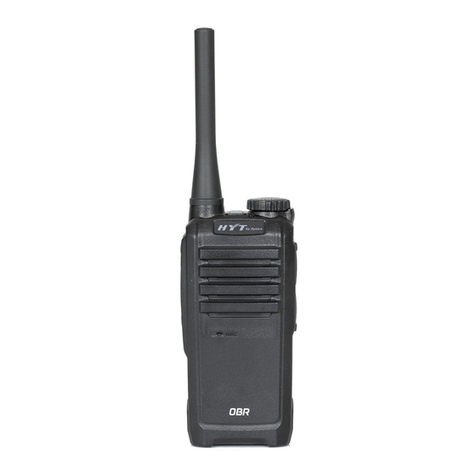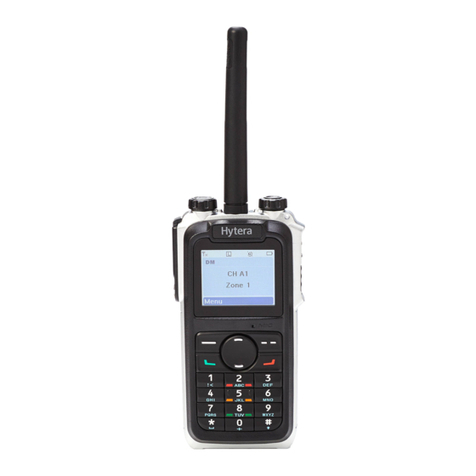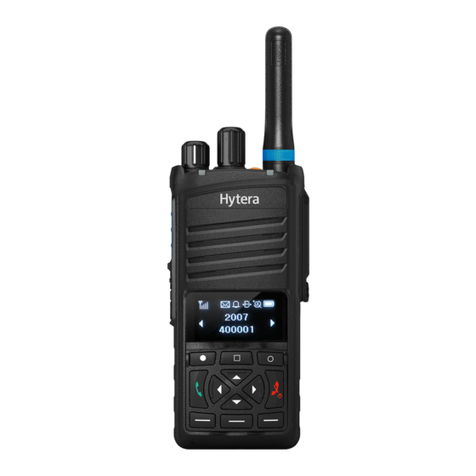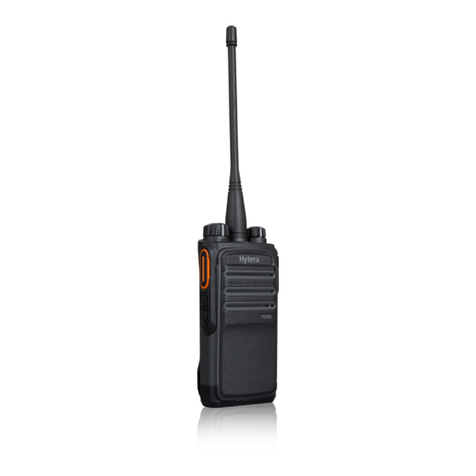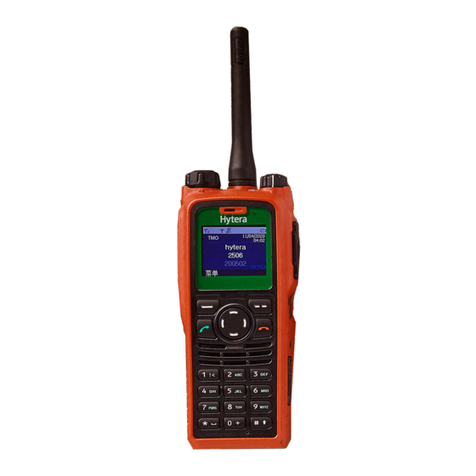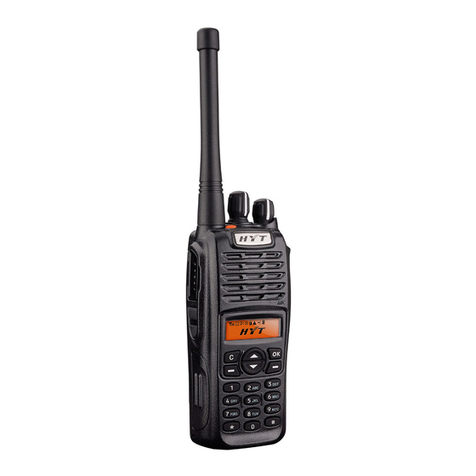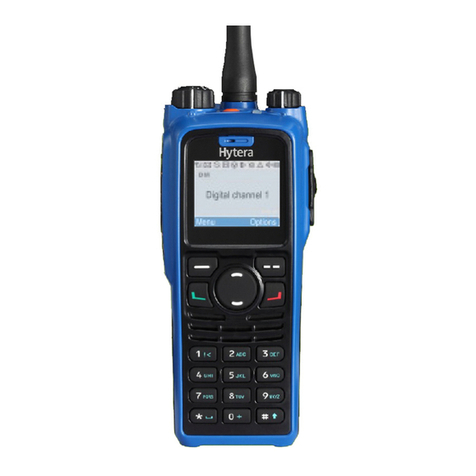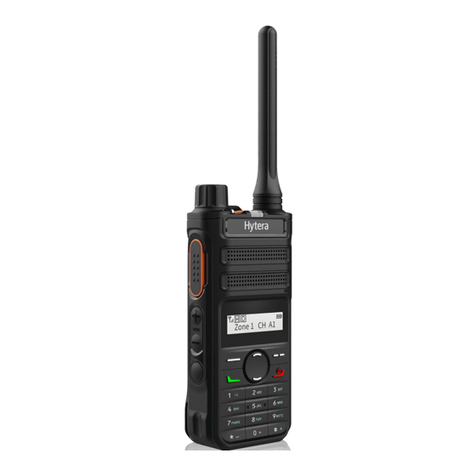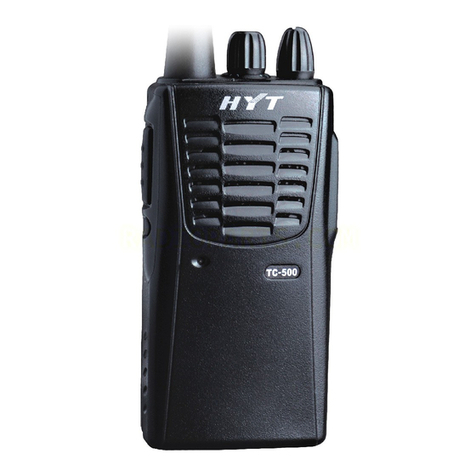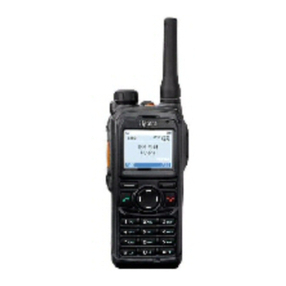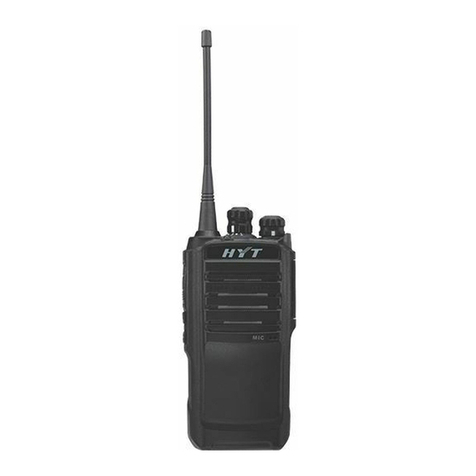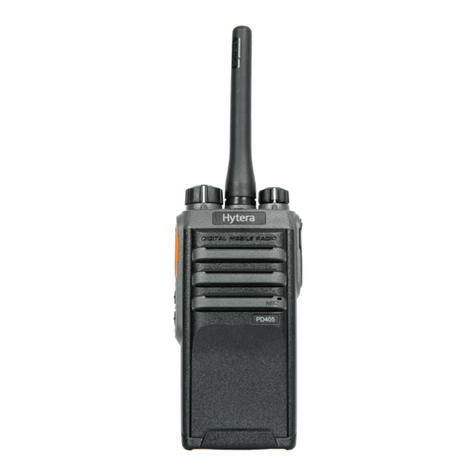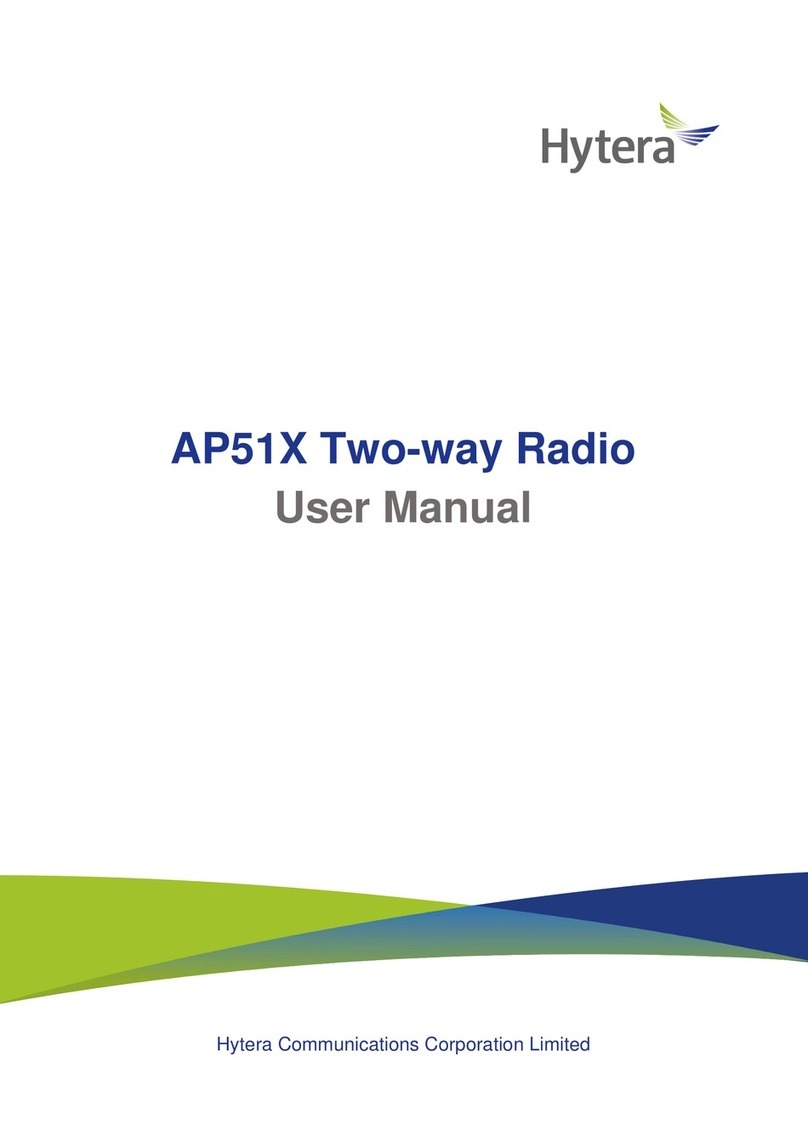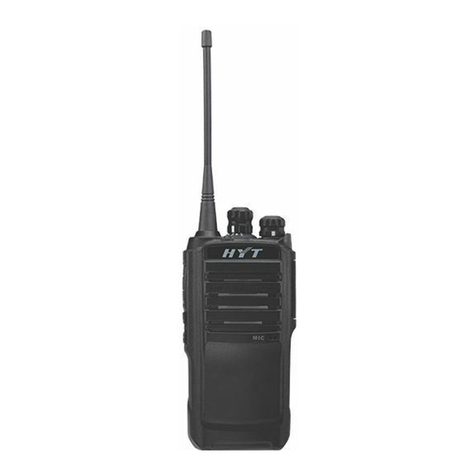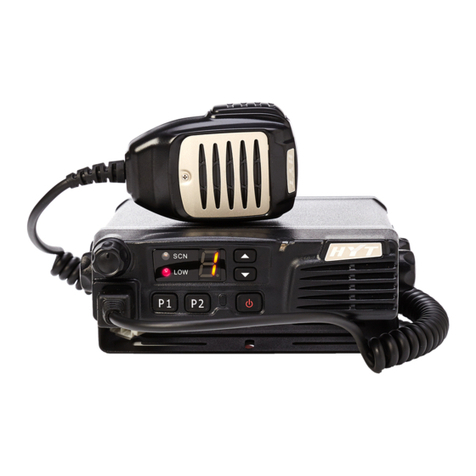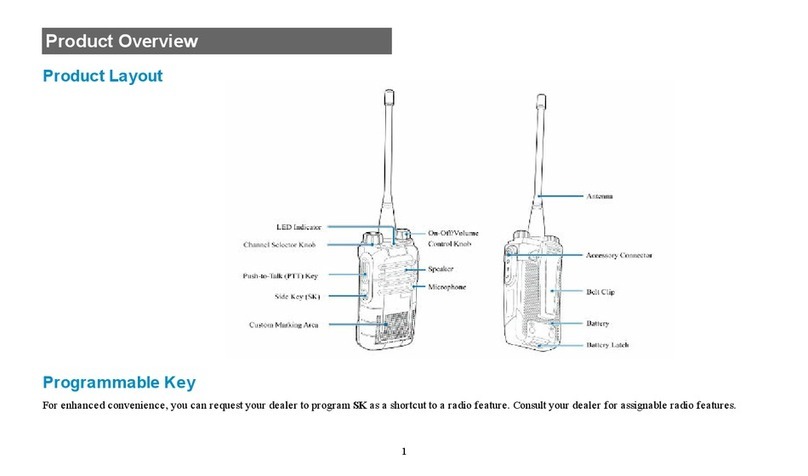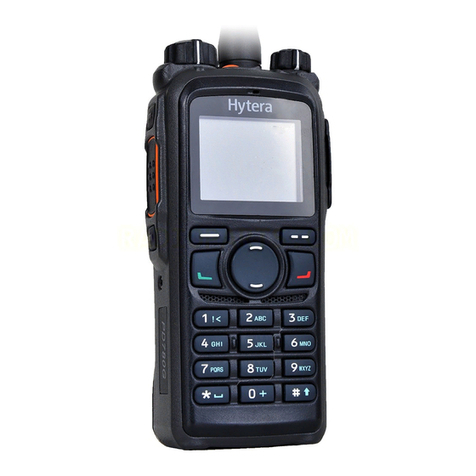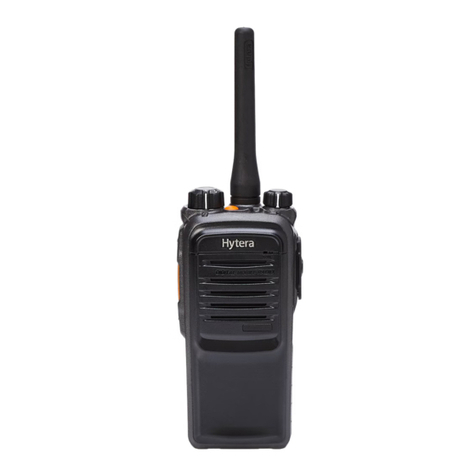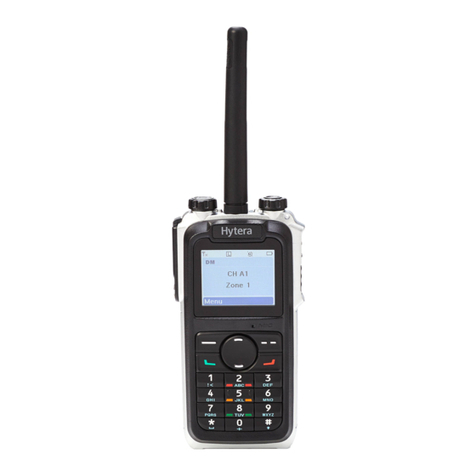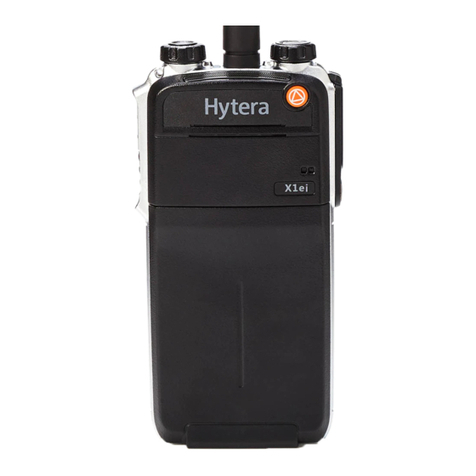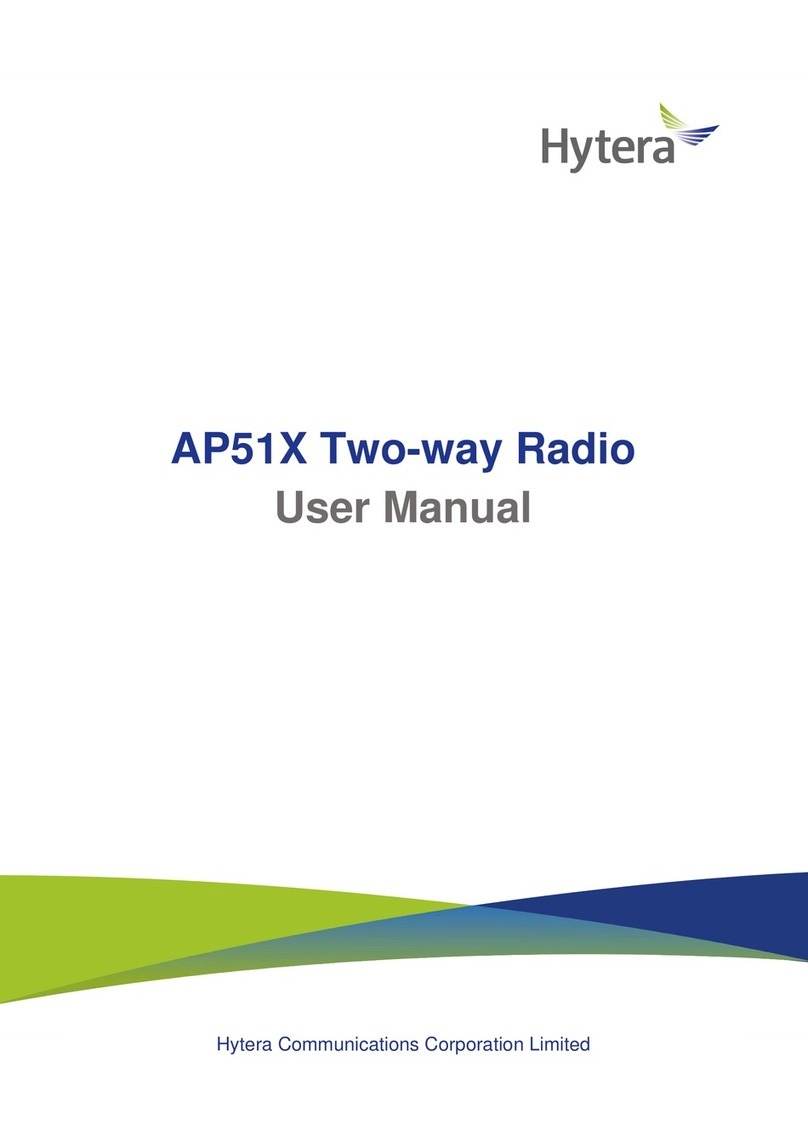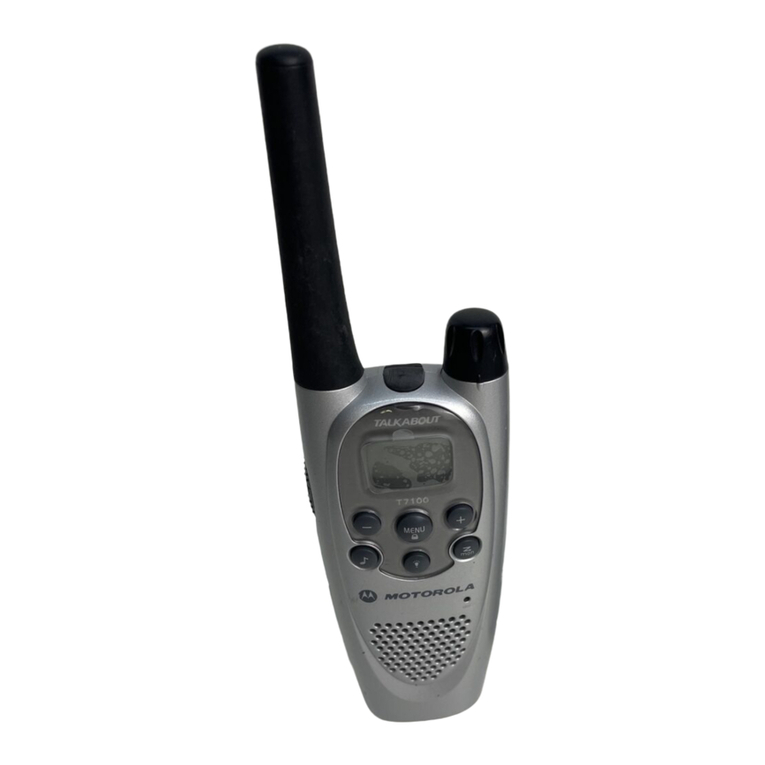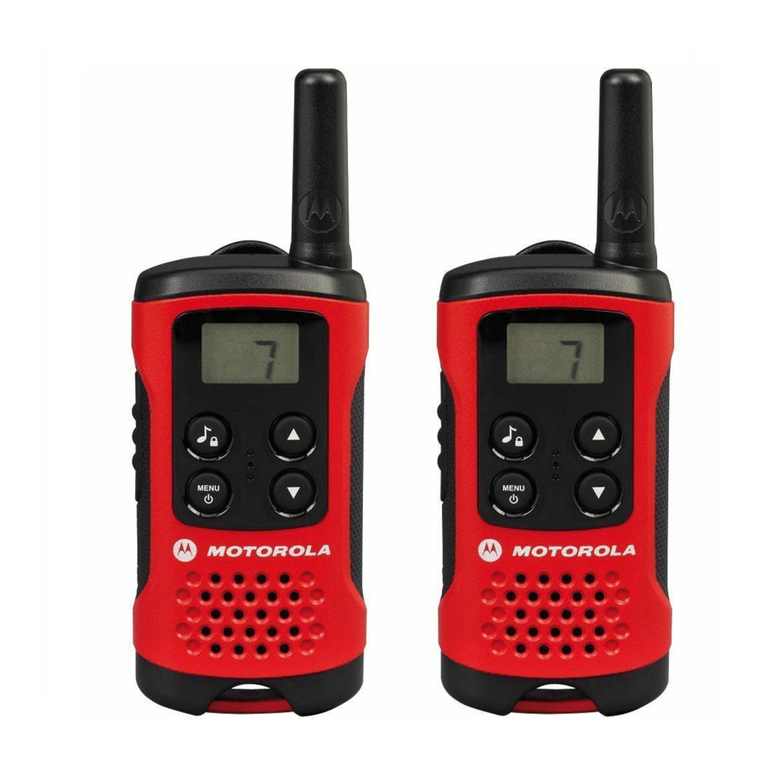
TC-700 Software Specification
6
3. Wireless Clone Mode
Select wireless clone from optional functions in programming software, turn the power on while
holding down PTT and SK1 key simultaneously for 2 seconds, then the source and target radios
enter wireless clone mode with orange LED flashing one time(After the source and target radios are
turned on and stay in the same channel, hold down PTT on the source radio to begin cloning).
During cloning, the LED of the source radio glows red and that of the target radio glows green. The
target radio flashes green and two Beeps are heard in case of successful cloning, it flashes red in
case of cloning failure.
4. User Wired Clone Mode
Select Wired Clone from optional functions in programming software, turn the power on while
holding down PTT and SK2 key simultaneously for 2 seconds, then the source radio enters user
wired clone mode with orange LED flashing twice. Then directly turn the target radio on. Hold down
PTT on the source radio to begin cloning. During cloning, the LED of the source radio glows red and
that of the target radio glows green. The LED of the source radio goes out in case of successful
cloning, it flashes red in case of cloning failure.
5. Manual Adjust Mode
Manual adjustment is performed to adjust frequency deviation, power, sensitivity, squelch, etc.
Note: Prior to entry for mode startup, select Manual Adjust Mode from optional functions in
programming software.
Manual Adjust Mode Description
(1) Enter the manual adjust mode
Turn the power on by holding down TK and SK2 key simultaneously for 2 seconds, then the radio
enters manual adjust mode with red LED flashing twice.
(2) Channel number on the channel selector knob
Each channel on the channel selector knob is defined as a setting item. 25KHz bandwidth and low
frequency (F1) is set on the next channel each time the Channel Selector Knob is rotated.
(3) SK2 key
Used to set the frequency. 1 point tuning adjusts center frequency; 3 point tuning adjusts F1, F3,
F5; 5 point tuning adjusts F1-F5.
The frequency toggles from low frequency to high frequency. Green LED flashes once when F1 is
selected.

